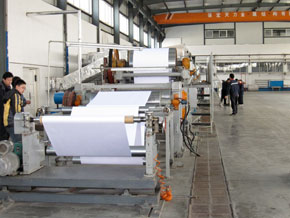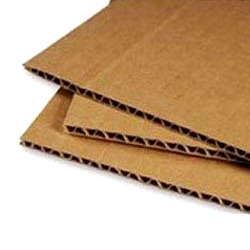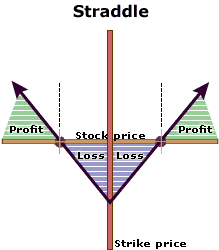This is the Dawning of the Age of Accountancy (Orient Paper)
Orient Paper (ONP) seems to have much in common with my other Chinese ideas: A high historical growth rate; a P/E ratio of 9 at current prices, a decent balance sheet, a Byzantine corporate history involving an offshore holding company and this time not even lumbered with a set of unusually high receivables; and being still in the capital building phase; and of course their cash flows are solely in yuan. Return on assets hovers around 20%, and return on equity around 25%, but since the price/book ratio is not particularly promising, and much of their value is made up of property, plant & equipment, returns to shareholders are, as above, still hovering around 11%. Of course, a paper manufacturer needs machinery, but from a defensive standpoint, current assets are preferrable to a large proportion of property, plant & equipment because of the possibility of obsolescence.
 Their current product mix is corrugating paper, midgrade offset printing paper, and digital photo printing paper, which are made using recycled paper. They claim to have a competitive advantage of being in very close proximity to their suppliers, as their factory is reasonably close to Beijing and Tianjin, both large cities that consume a lot of paper and run a recycling program. Their inventory turnover rate in 2009 has been 21 days, which, applied to their first quarter 2010 inventory levels, suggests sales in the next four quarters of approximately $130 million, which at their current margins would produce a forward P/E ratio of 6. Of course, I view such naive projectionism with suspicion, but it is still a tantalizing data point. Digital photo paper, which they have only been producing for one quarter, seems to be a high margin business – gross profit of 66% of total sales if the first quarter’s results are typical. The company also claims to have purchased a larger assembly line to produce a higher volume of corrugating paper, which is being installed over the course of the next couple of quarters. In all, a good picture of a plucky, growing company.
Their current product mix is corrugating paper, midgrade offset printing paper, and digital photo printing paper, which are made using recycled paper. They claim to have a competitive advantage of being in very close proximity to their suppliers, as their factory is reasonably close to Beijing and Tianjin, both large cities that consume a lot of paper and run a recycling program. Their inventory turnover rate in 2009 has been 21 days, which, applied to their first quarter 2010 inventory levels, suggests sales in the next four quarters of approximately $130 million, which at their current margins would produce a forward P/E ratio of 6. Of course, I view such naive projectionism with suspicion, but it is still a tantalizing data point. Digital photo paper, which they have only been producing for one quarter, seems to be a high margin business – gross profit of 66% of total sales if the first quarter’s results are typical. The company also claims to have purchased a larger assembly line to produce a higher volume of corrugating paper, which is being installed over the course of the next couple of quarters. In all, a good picture of a plucky, growing company.
Now, the perceptive reader will note that I used the word “claim” twice in the above paragraph. This is because a certain outfit by the name of Muddy Waters Research issued a report about a week and a half ago suggesting that the company is engaging in a scheme of massive fraud and misappropriation. The company issued approximately $27 million in stock earlier this year to purchase the new cardboard line, but the report claims that the entity that sold them the machines has no device that can produce at the capacity claimed by Orient Paper, and that this money has disappeared. The report also claims to have a filing with the Chinese authorities that Orient Paper’s sales are a small fraction of what they reported, and that they visited the factory in January of this year and found it in a state of dilapidation, without any trucks moving in and out the massive supplies of raw materials and finished paper that the company would have to buy and sell every day. They also claim that the company has turned over their largest customers too many times to produce the kind of sales growth they have. Muddy Waters announced that they had a short position at the time of the report’s release, which must have made them a great deal of money since prices declined from about $9 a share to about $4 and change at one point, although they have now recovered to $7.
The company is not taking this lying down, of course. One of the company’s defenders, and a long holder of the stock, claims that Muddy Waters originally visited them with a view to write a positive report in exchange for hundreds of thousands of dollars in cash and securities, a claim that Muddy Waters denies. Furthermore, the company has issued a comprehensive press release, first noting that Muddy Waters has the report of the Chinese authorities of a company with a similar name, and has produced a faint scanned copy of their own filing that shows the claimed revenue accurately. Muddy Waters has not, to my knowledge, published a copy of the document they obtained. Furthermore, the company claims that they receive deliveries of raw materials early in the morning, and their customers generally pick up their purchases either early in the morning or late in the afternoon, whereas the authors of the report visited in the middle of the day – a glib explanation if false, but perfectly reasonable if true. As for the dilapidation of the factory, one of the company’s defenders claims to have visited the same factory and found it to be untrue.
As for the large customer turnover, Orient Paper claims that their product mix shifted between the 2008 and 2009 annual reports; they used to create high quality offset printing paper that is not made with entirely recycled material, but the soaring price of wood pulp caused them to move to recycled feedstock and produce instead what they called medium quality printing paper, which of course is of interest to different customers.
 As for the misappropriation of $27 million, the company claims that Muddy Waters’ contact with the equipment manufacturer must have been mistaken. Muddy Waters claims that the manufacturer’s largest line can produce only 150,000 tons of paper a year and costs $4.4 million, but Orient Paper claims this to be a ridiculous figure, and that they wish they could get hold of this mythical machine, because at their profit margins they could pay off the cost of acquiring it in less than a year. The company claims that the line they actually purchased is a custom job for $27 million and capable of producing 360,000 tons of paper a year (at their current margins it would pay for itself in a little over two years, but they claim it will produce a denser paper that should sell for higher prices (at a cost of more raw materials, obviously)), and that they provided the contract in their SEC filings previously, which provides that payment will be made at various stages of the completion of the installation.
As for the misappropriation of $27 million, the company claims that Muddy Waters’ contact with the equipment manufacturer must have been mistaken. Muddy Waters claims that the manufacturer’s largest line can produce only 150,000 tons of paper a year and costs $4.4 million, but Orient Paper claims this to be a ridiculous figure, and that they wish they could get hold of this mythical machine, because at their profit margins they could pay off the cost of acquiring it in less than a year. The company claims that the line they actually purchased is a custom job for $27 million and capable of producing 360,000 tons of paper a year (at their current margins it would pay for itself in a little over two years, but they claim it will produce a denser paper that should sell for higher prices (at a cost of more raw materials, obviously)), and that they provided the contract in their SEC filings previously, which provides that payment will be made at various stages of the completion of the installation.
As I hear this story I am reminded of a book called Sold Short by Manuel Asensio, who found a similar fraud, if fraud there be. A company claimed to be able to extract bitumen from Canadian oil stands without using the caustic materials that prevailed in the established process. Having raised $70 million in capital, the company made a great show of building a factory, and hiring the fitters, plumbers, and factory technicians to fill it up, but when the hype died down they fired most of them, intending to keep on only as many people as would allow them to build a single machine that would produce one barrel of bitumen, which would justify them in their search for the next round of financing. He estimates that they spent $40 million in an effort to make it look like they spent $70, and wondered how much more work it really would have been to have actually built a factory and rolled the dice. It’s an inspiring story, and perhaps it inspired Muddy Waters to make this bold accusation in what is apparently their first public report.
So, where does that leave us who are considering an investment? Ultimately, the sad fact is that the typical investor, no matter how boundless their financial genius, is more or less powerless against fraud. Ben Graham, in Security Analysis, reminds us that bonds are largely homogenized (by credit rating, maturity, embedded options, covenants, etc.), and thus if you reject one bond in favor of a similar one, you will feel no regret. However, with stocks rejecting the right one is often as painful as buying the wrong one. And yet, if there is any indication of fraud, especially with Madoff burning freshly in the public’s mind, the defensive investor might be best served by avoiding risk on this one, at least until the smoke clears. After all, short of traveling to China to check, taking either a long or short position based on the reports of Muddy Waters, who has a big short position, or the company’s defenders at thestreet.com, who are long, seems to verge on rolling the dice. Muddy Waters certainly tells an incredible story, but I suppose most accusations of fraud sound incredible, and there are several Chinese companies (as well as several American ones), that have engaged in such fraud in the past.
 However, amid this uncertainty there is a perfectly good way to play this situation, as the uncertainty is entirely binary. Either Muddy Waters is right and the company is worthless, or Muddy Waters is wrong and the company is worth at least the $9 it was trading at before they issued their report. There is nothing in between. And Orient Paper has options trading on it. A long straddle, buying both puts and calls at the nearest strike price of $7.50, was invented by options players for exactly this type of situation.
However, amid this uncertainty there is a perfectly good way to play this situation, as the uncertainty is entirely binary. Either Muddy Waters is right and the company is worthless, or Muddy Waters is wrong and the company is worth at least the $9 it was trading at before they issued their report. There is nothing in between. And Orient Paper has options trading on it. A long straddle, buying both puts and calls at the nearest strike price of $7.50, was invented by options players for exactly this type of situation.
Either way, someone is getting sued over this. You don’t need an analyst to tell you that.
Leave a Reply